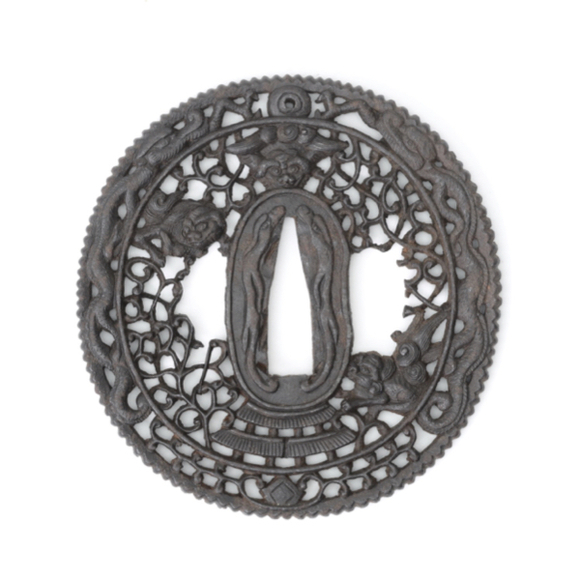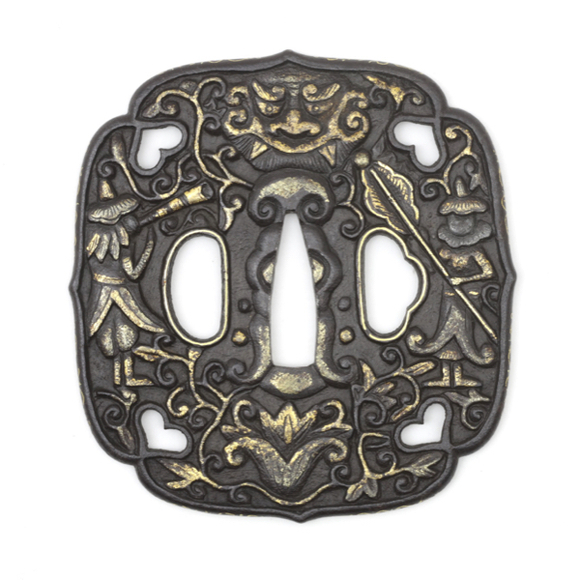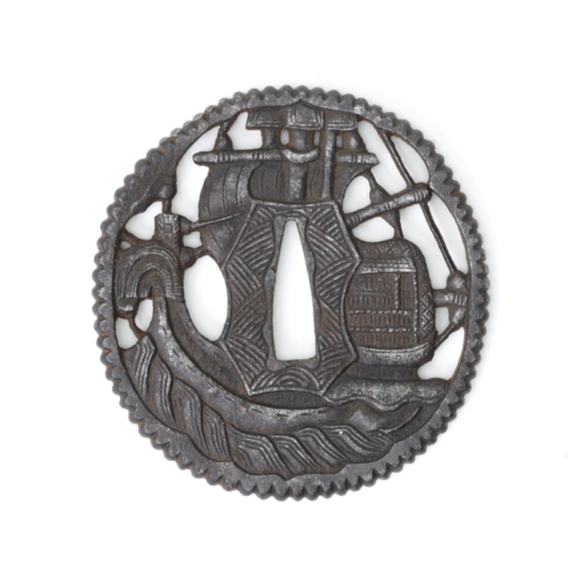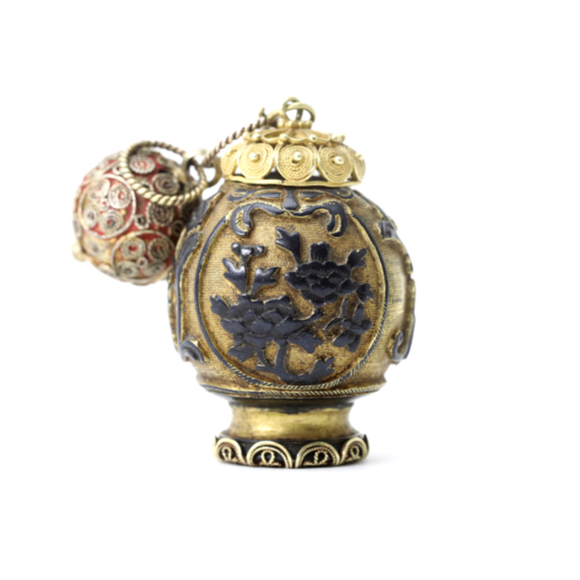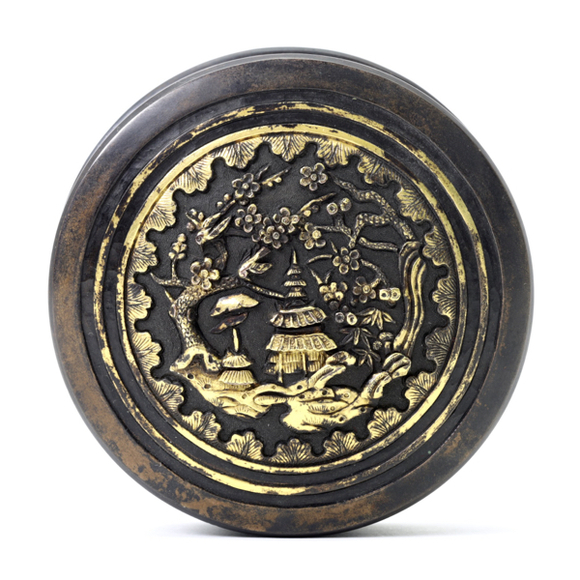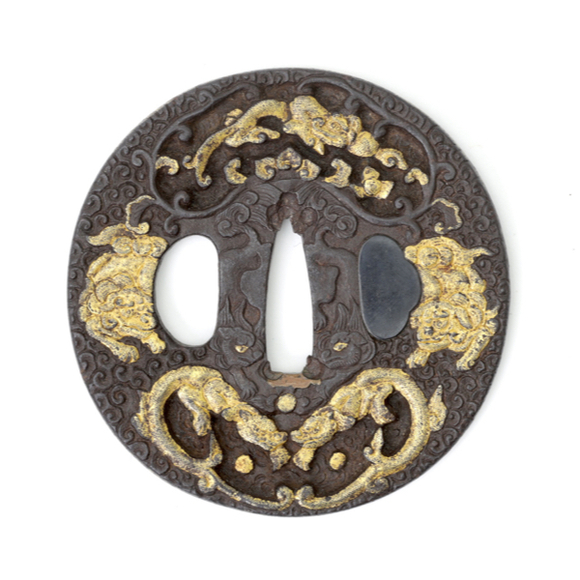Very delicate work with carved guardian lions.

72 x 64 x 12.5 mm
158 grams
Iron, gold, copper
Maritime Asia
16th century
From a Japanese collection
Description
16th-century Asia was shaken up by the sudden presence of European ships. They established trade posts and networks and accelerated contact between cultures in the region. This lead to the production of some very interesting cross-cultural items, probably meant for the multi-cultural crews aboard these ships. Apart from their European and African slave crews they also included, for example, Japanese samurai mercenaries who saw action across Asia.
Presented here is a very curious sword guard. It is in the general form of a smallsword guard, but made of thicker iron. It is concave on one side, convex on the other, with a very thick rim. The rim is chiseled with floral designs, shells, and four European bearded faces.
The designs on the main plate include Western figures with prominent noses, and snakes on the other side. In between them is a mesh of intersecting beams, much reminiscent of the hatch gates on ships of the time.
The tang opening is multi-functional, fitting the rectangular tang of the typical European sword of the time, as well as the tapered tang of the Japanese sword. The copper inserts in the tang opening indicate it was carried on a Japanese sword at some point in time.
On either side of the tang opening are three pointed elements, damascened in gold. They remind of the three pillars seen at the bottom of dragon robes, and in particular those of the Ming dynasty. See, for example, a Wanli period Back and Sleeve of a Dragon Robe in the Metropolitan Museum, New York.

Fragment of a Ming robe.
Metropolitan Museum, accession number 1986.143.
Where is it from?
Looking at the workmanship, the piece was definitely made in Asia. The work does not look Japanese. The multi-functional tang opening may indicate it was made in a port city with an intended audience of multi-cultural crews of trade and pirate ships. It could also have been made for a Japanese audience that by now had grown a fascination for foreign things.
I believe it is quite early, based on the fact it faithfully copies earlier European design motifs. I would tentatively place it in the second half of the 16th century.









Unusual tsuba with foreign figures and Chinese auspicious symbols.
Sawasa is metalware in black and gold made primarily for the Dutch expat community in Asia.

